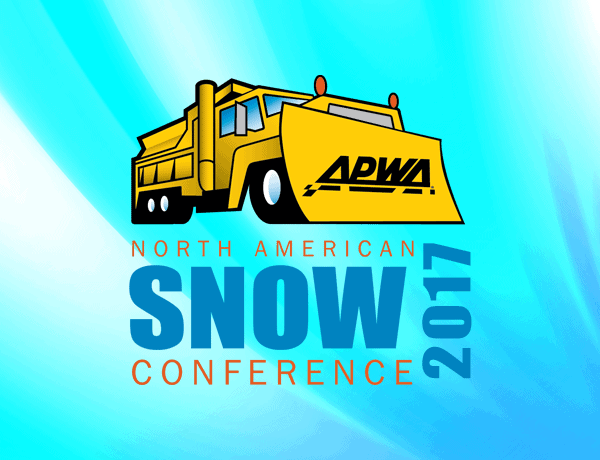Video
Self-Assessment is an excellent way to examine and evaluate your agency's current management policies and procedures. In this session, you will gain an understanding of why self-assessment can improve effectiveness,…
Read MoreOperations managers know they can no longer operate as they have in the past for many reasons including increased operational costs, declining budgets, loss of staff and increased service level…
Read MoreImplementing change in a public works department can be challenging, to say the least. Whether battling the ""we have always done it this way"" syndrome, or trying to adopt new technologies or practices, a public works manager can face many obstacles on the road to a high functioning department. This session will be led by a 28-year public works career veteran who will describe how using modern leadership practices and philosophes has helped his department turn the corner into a 21st century success story.Learning Objectives: Delegate tasks and projects more efficiently.Communicate new ideas and deal with resistance to change.Manage a successful organization change program.
Read More(Presented by APWA's 2017 Emerging Leaders Academy (ELA) Class)APWA's Emerging Leaders Academy provides intensive leadership and management training within the context of public works. It encourages professional growth through a strong network of peers and offers an in-depth introduction to APWA at the national and chapter levels. As an element of their class project, the 2017 Emerging Leaders Academy (ELA) participants have investigated how public works departments can increase their presence and reputation within their communities. Their findings revolve around four major components: Leadership: Explore the qualities of servant leadership and why this type of leader is successful in the public works environment. Resilience: Consider how well your public works agency adapts to adversity and meets the challenges of disaster response and infrastructure resilience. Outreach: By engaging the public through events, various forms of media, a strong outreach program empowers people of all walks of life to feel an emotional connection to public works and all the services provided to the community. Technology: By using 21st century technology, including social media, public works is able to provide two-way exchanges of information, involving the public in collaborativeLearning Objectives: Identify the type of leaders that can best serve your public works operation and the community at-large.Discuss the importance of building resiliency into to public works infrastructure and services.Develop a public outreach program that deploys social media and other communication strategies to increase the presence and reputation of public works with your community.
Read MoreSuccessful implementation of asset management does not happen by accident. It requires a carefully considered plan to ensure that your agency's goals are met and measureable results are achieved. Using Polk County's pavement management program as a case study, this session will review the steps for implementation, decision-making and reporting requirements, software configuration, testing, and training. Also featured in this session will be a case study highlighting how Dunedin, Florida performed a stream-lined implementation using best practices, a gap-fit process, and field calibration exercises to ensure expected results.Learning Objectives: Conceptualize the process needed to perform a critical review of an existing asset management system and then plan for updates and enhancements.Recognize the functionality required in an asset management software package as it pertains to all collected assets and the agency's goals.Analyze the cost-effectiveness of a robust asset management plan and gain support from key decision-makers.
Read MoreAs public works professionals, we are confident in our ability to do everything from repairing potholes to responding to emergency situations. But one thing that we are not necessarily good at is advocating for our profession and our public works departments. Learn about Charlotte County, Florida’s successful outreach program, which includes “”touch a truck”” sessions at community events and elementary schools, job fairs at high schools and community colleges, and a strong social media presence. They have not only increased visibility within the community, but also improved employee morale.Learning Objectives:Implement a department-wide rebranding project.Communicate communication with the public using social media.Educate the next generation about the importance of public works to the economic progress and quality of life of the community.
Read MorePrivatization, de-privatization, managed competition-this panel of solid waste management leaders will NOT answer the question on which system is best. (Sorry!) But they will share their expertise and case studies concerning the costs and benefits of each option, discuss issues with service delivery and customer service, and provide tools you can use to design or tweak your service delivery systems. We'll also focus on how to ensure better customer service, fair treatment of employees, and a safe working environment.Learning Objectives:Discuss the different benefits between privatization, de-privatization, and managed competition.Examine how to analyze costs benefits between the three options.Review how to ensure better customer service and a safe working environment.
Read MoreCase studies will be presented about how online permit systems can transform onerous paper-based procedures into empowering integrated WebGIS ROW occupation management systems. This type of system comes complete with intuitive dashboards for both applicants and validators, step-by-step standardized workflow, easy-to-use interactive mapping, valuable spatial and attribute queries and filtering. It is all contained within a secure but readily accessible geographic database server environment, with an integrated inspection tablet app for QA/QC.Learning Objectives:Improve ROW permit process efficiency.Coordinate traffic management issues related to ROW projects.Use a tablet app to track non-compliant work and road condition.
Read MoreMost public works departments in warmer climate regions do not have the means to implement extensive snow and ice remediation programs. But when inclement weather does occur, the incidents still need to be managed, tracked, and recorded. Attend this case study of how the Greenville, South Carolina, public works department implemented a work management program to dispatch and geo-spatially track inclement weather operations.Learning Objectives:Discuss how using the resources and data the already have can achieve surprising positive results.Evaluate some unorthodox ideas used by Greenville for dispatching snow and ice events to determine if they would work for your situations.Review how to implement a temporary command center for dispatching snow and ice events.
Read MoreIn August 2015 a 200-year monsoon event occurred in Northern Arizona on US 89A. The rainfall was between 1.3-1.7 inches within a 15 minute period, overwhelming drainage structures. Boulders over 15 feet in diameter smashed onto the highway. Crews arrived within 15 minutes to assess the damage. Arizona DOT has a state funding limit on emergency projects. The damage and cleanup were beyond the $700,000 limit, so they had to access FHWA Emergency Relief funding. Despite all the challenges, clean-up and repair happened in record time. Explore how they used job order contracting to accomplish this feat.Learning Objectives: Implement key best practices to better manage an emergency situation due to weather elements.Maximize resources during an emergency situation.Recognize situations ideal for the job order contracting procurement method.
Read More
